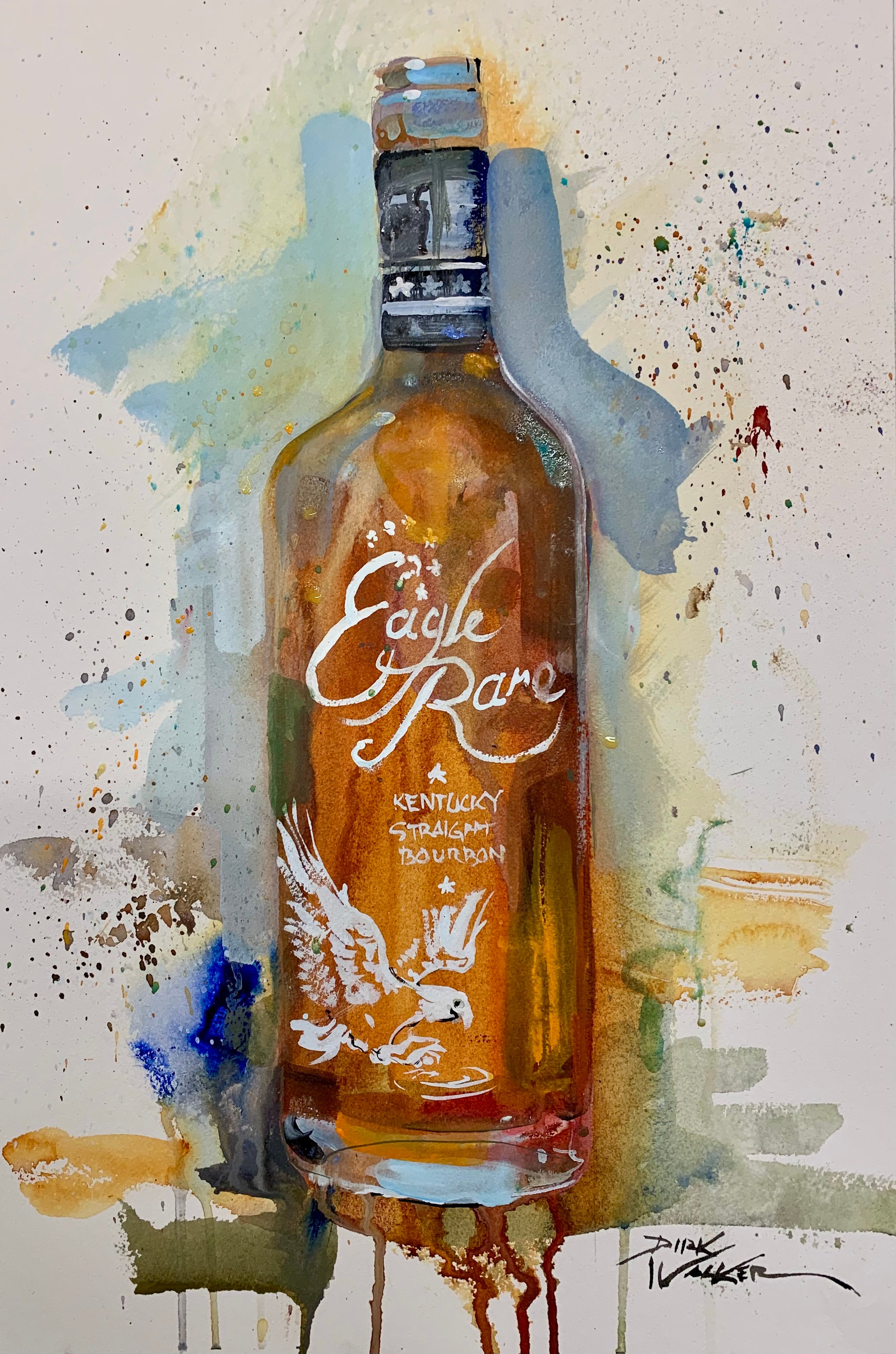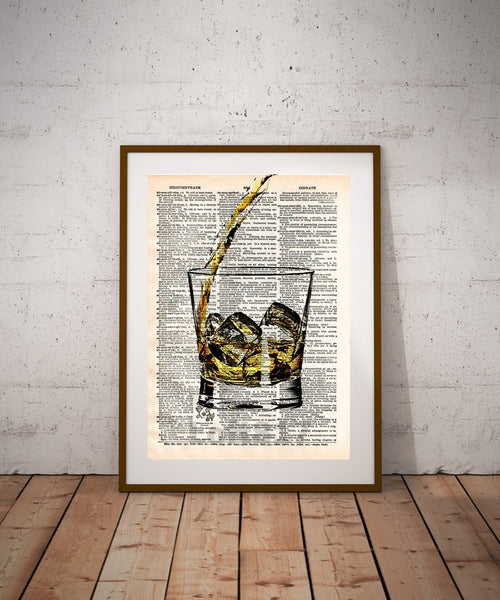Limited Edition: Discover Exclusive Bourbon Art Pieces for Collectors
Limited Edition: Discover Exclusive Bourbon Art Pieces for Collectors
Blog Article
The Relevance of Whiskey Art in Celebrating Heritage and Workmanship in the Beverage Industry
The elaborate connection between whiskey art and the celebration of heritage and workmanship within the drink market can not be overemphasized. With thoughtfully developed bottles and labels, whiskey brand names envelop their historical roots and the artisanal skills that specify their manufacturing approaches. This imaginative measurement not only enhances market allure yet likewise serves as a conduit for social storytelling, promoting a deeper link in between the consumer and the craft. As we discover the different facets of this subject, fascinating concerns about the influence of modern-day patterns on traditional techniques develop, prompting more assessment.
The Historic Roots of Whiskey
At the heart of whiskey's attraction lies an abundant tapestry of historic roots that map back to old civilizations. The beginnings of whiskey can be linked to the purification practices of the Sumerians and Babylonians around 2000 BCE, where very early forms of fermented grain beverages started to emerge. It was in the Center Ages that the art of purification developed dramatically, specifically in Ireland and Scotland, leading to the production of scotch as we know it today.
The term "bourbon" itself derives from the Gaelic word "uisce beatha," suggesting "water of life." This phrase highlights the social value of whiskey in Celtic societies, where it was frequently associated with rituals, celebrations, and public bonding. By the 15th century, distillation came to be an identified craft within monastic communities, leading the way for the facility of legal distilleries.
As trade paths increased, bourbon's appeal expanded, going beyond local boundaries and capturing the rate of interest of lovers worldwide. Realism Art. This historic trip mirrors not just the workmanship behind bourbon manufacturing yet additionally its integral role in social and cultural contexts, marking it as a significant drink throughout background
Artistic Expression in Branding
Bourbon branding stands as an engaging junction of virtuosity and commerce, where visual identification plays an essential role fit customer assumption. The visual appeals of whiskey labels, product packaging, and advertising and marketing products mirror not just the brand's story but additionally its core worths and heritage. With artistic expression, distilleries convey a story that reverberates with consumers, evoking feelings and stimulating connections.
The use of shade, typography, and imagery in branding offers to separate products in a saturated market. As an example, conventional concepts may evoke a feeling of authenticity and workmanship, while modern layouts can represent innovation and forward-thinking. This calculated creative instructions improves brand name recognition and commitment, permitting consumers to build a personal relationship with the bourbon they choose.
Additionally, artistic expression in branding commonly functions as an event of local heritage. Distilleries frequently integrate neighborhood symbols or historic referrals into their styles, developing a sense of location that welcomes customers to partake in a wider social experience. Ultimately, the artistry behind scotch branding not just boosts visual charm yet also enriches the general story of the brand name, promoting a deeper admiration for the workmanship and heritage embedded in each bottle.
Craftsmanship in Bottle Style
The creativity noticeable in scotch branding expands past aesthetic identity to encompass the craftsmanship associated with bottle style. Each bottle works as a vessel not simply for the spirit within, yet additionally for the tale it outlines its origin, quality, and custom. The design procedure calls for thorough focus to information, as aspects such as closure, shape, and product contribute considerably to the general assumption of the whiskey.
Workmanship in Going Here container style involves selecting top quality glass that can enhance the bourbon's shade and clearness, while also offering a tactile experience for the consumer. The shape of the container should be both visually appealing and useful, usually mirroring the heritage of the brand. Several distilleries select distinct forms or embossed logos that stimulate a sense of credibility and history.
Moreover, the label style and typography play an essential duty in interacting the brand's story. Bourbon Art. A well-crafted container not only astounds the consumer's eye yet also enhances the brand's dedication to high quality and practice. This way, the workmanship of bottle layout becomes an essential aspect of the bourbon experience, merging artistry with an extensive regard for heritage
Cultural Value of Whiskey Art
Commemorating practice and craftsmanship, the social significance of scotch art goes beyond simple visual appeals, linking with the social and historical stories of the regions from which it comes from. Each container functions as a canvas, illustrating the unique tales, folklore, and customs that have actually formed local whiskey-making methods. The detailed designs typically mirror the heritage of the distillers, incorporating symbols and themes that resonate with the society and values of their communities.

On top of that, bourbon art plays an important duty in communal events and celebrations, serving as a tangible link between individuals and their shared experiences. By appreciating the creativity in bourbon packaging, customers grow a deeper understanding and regard for the craft, inevitably enhancing their satisfaction of the beverage itself.
Modern Trends in Scotch Discussion
Over the last few years, the presentation of bourbon has developed to mirror modern tastes and patterns while still recognizing typical craftsmanship - Limited Edition. Distilleries are significantly concentrating on aesthetic aspects that boost the overall drinking experience, connecting the space in between heritage and modernity
Cutting-edge bottle designs have arised, commonly incorporating click here to read lasting materials and imaginative labels that inform engaging stories. Numerous brand names currently team up with neighborhood musicians, infusing their products with distinct visual expressions that internet resonate with consumers. Furthermore, limited-edition releases are commonly packaged in collectible containers, including worth and allure for aficionados.

Verdict
Finally, whiskey art serves as an essential conduit for expressing the heritage and craftsmanship intrinsic in the drink sector. Through complex branding, innovative bottle designs, and culturally considerable creative components, bourbon brand names effectively honor their traditions and link with consumers. This creative story not only elevates the gratitude of scotch however likewise strengthens neighborhood identification and satisfaction amongst manufacturers. Eventually, scotch art plays a crucial duty in preserving and commemorating the rich cultural tapestry of whiskey-making.


Craftsmanship in container layout includes selecting top quality glass that can enhance the bourbon's color and clearness, while also giving a responsive experience for the consumer. In this way, the workmanship of bottle design ends up being an important element of the whiskey experience, merging virtuosity with a profound regard for heritage.
In verdict, scotch art offers as a crucial avenue for expressing the heritage and craftsmanship integral in the drink market.
Report this page